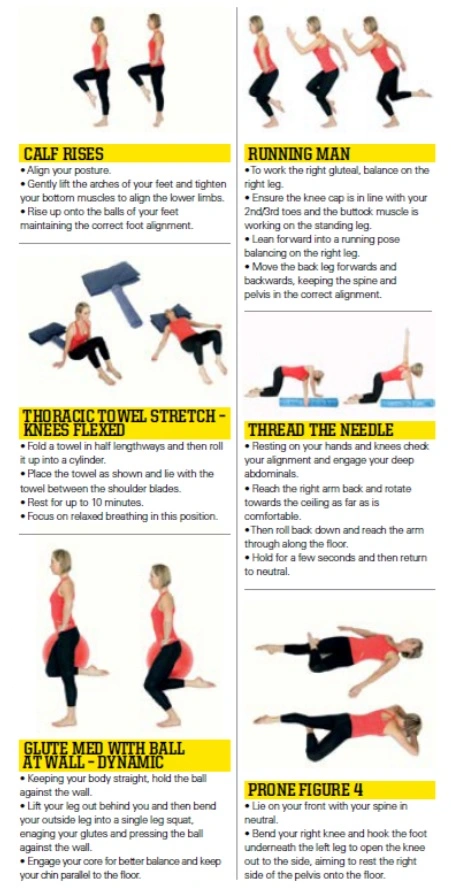Caitlin Miles explains how to deal with this common complaint TriathlonPlus Physio Corner Aug 2016
What is it?
When we Run or do any exercise that involves impact loading; a force is passed back up through our body called ground reaction. All of the tissues within our bodies such as muscles, ligaments, tendons and bones react to firstly absorb this force but also to generate energy to push our body forwards for the next step. If there is a mismatch in the way our tissues absorb this force (for example through weakness or injury), the load is focussed to the other structures. If this force exceeds what that structure is capable of absorbing then injury occurs. Stress fractures are the result of too much force being put through a bone, causing that bone to swell and eventually potentially crack.
How to identify it
Stress fractures are not always easy to identify as their symptoms match many other lower limb injuries. However patients often describe;
- Pain when running that worsens with distance.
- Focal sharp pain to touch over the relevant bony area
- Pain at rest, particularly at night
- Pain on hopping
If in doubt, you should always seek the advice of a medical professional. They will assess the history of the injury and may seek further imaging of the area for confirmation.
How to avoid it/ Fix it
Make changes gradually: Stress fractures often occur due to a change in someone’s training habits. This may be an increase in intensity, speed, or distance. It is advisable when you are making these changes that you do it gradually so your body can adapt to these new demands.
Variety is the spice of life: Varying the surface that you run on can help prevent stress fractures. Running on the same hard surface will cause repeated loads on the same structures every stride you take. If you change up the surface with grass, treadmill, tarmac or trail for example, you will be helping your body out.
Look to low impact: When your training programme is looking to increase your number of long runs, it may be worth substituting this with another low impact cardiovascular exercise such as cross training, cycling or swimming. That way your body still reaps the cardiovascular benefits but without loading our bones and therefore giving them a rest period.
Mobility and Control: As stated, stress fractures occur due to a mismatch in forces being spread through our soft tissues when we load our bodies. Therefore it is advisable to ensure your body is capable of dealing with the stress you put it under with your training regime. Not only do you need an appropriate range of movement in certain joints but you also need the strength needed to absorb and transfer forces. For example your hip joints need a certain amount of extension on the back leg and your glut muscles need a certain amount of strength and control to keep the pelvis level when you land. It is a good idea to incorporate strength and conditioning in your programming. Here are some examples of good exercises.

